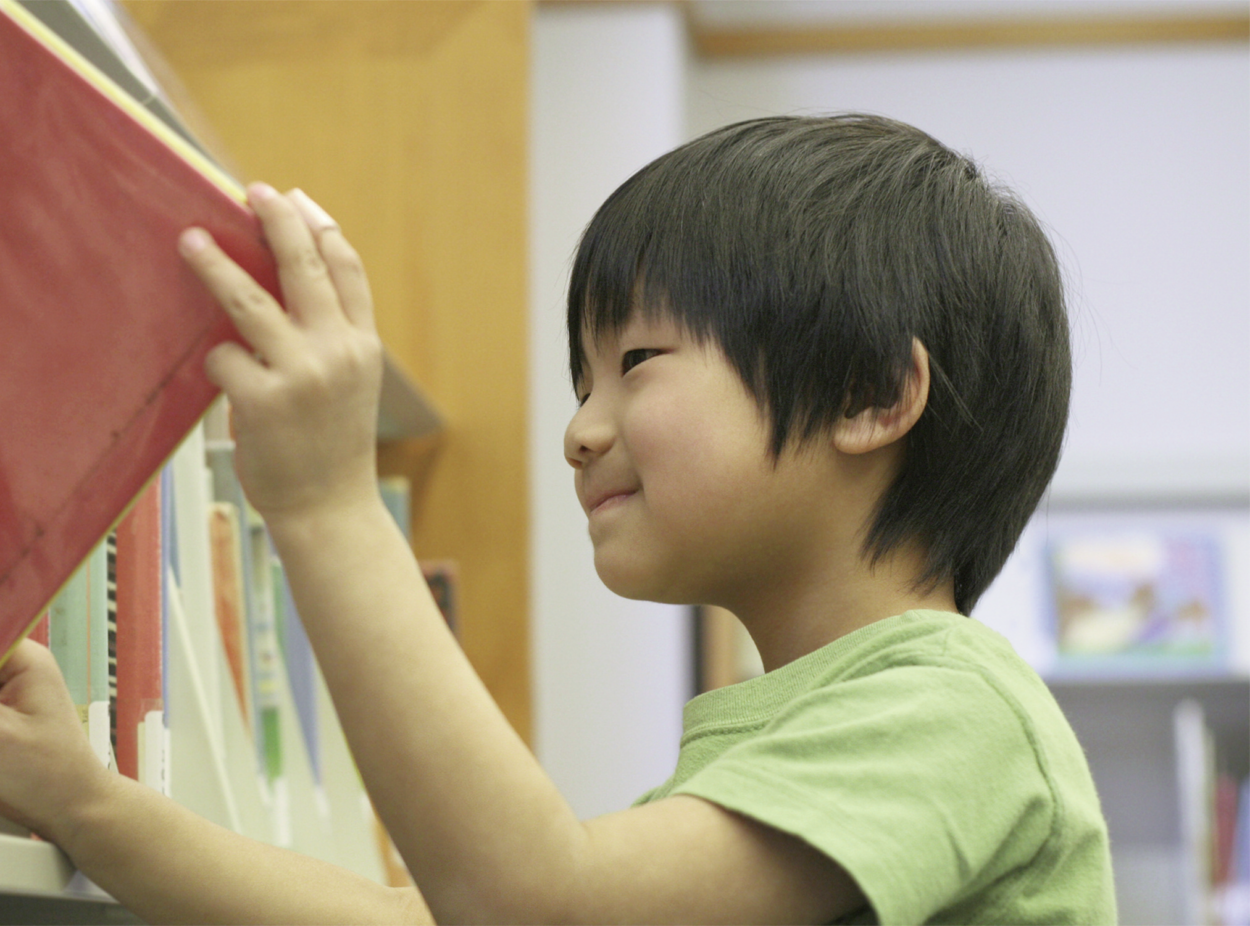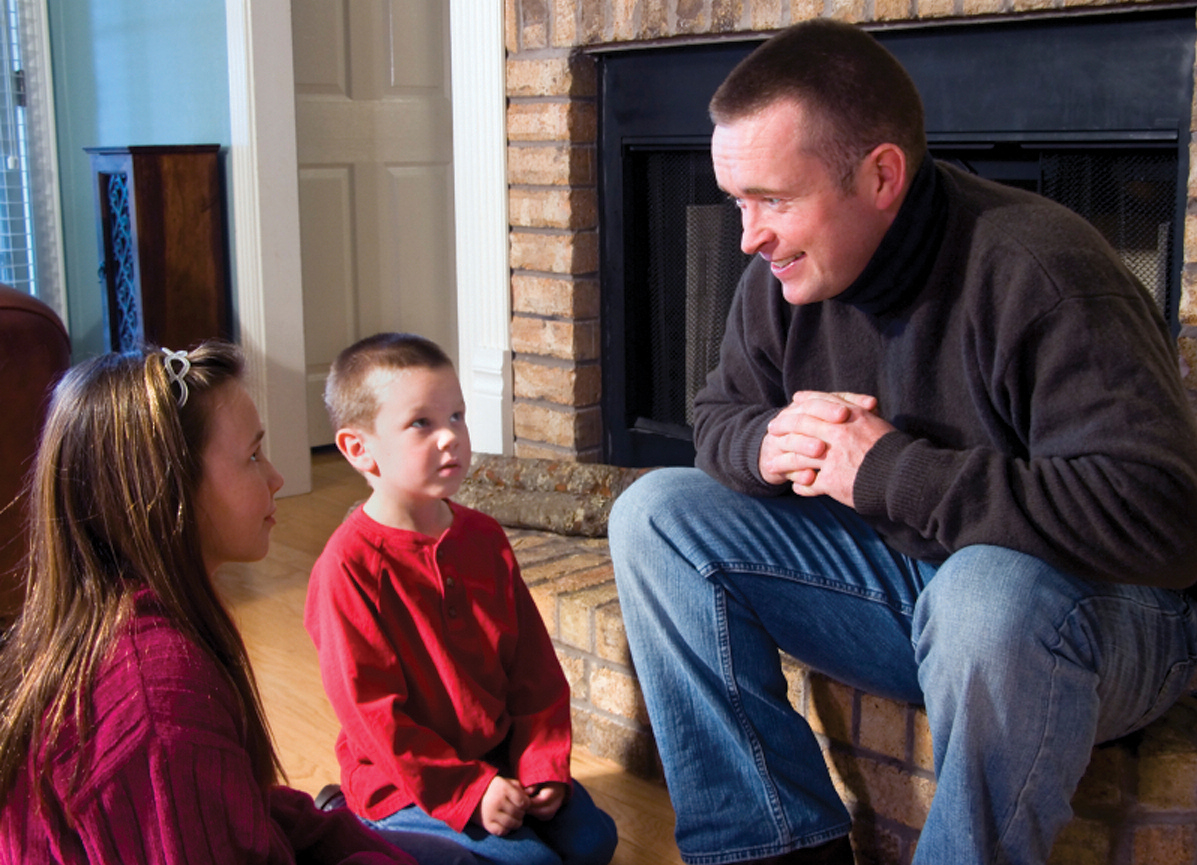5th Year
MONTHS
55-56
5th Year – Months 55-56
Use the M-O-V-E Formula to Promote Healthy Physical Development
 The M-O-V-E formula stands for:
The M-O-V-E formula stands for:
- Motivation
- Opportunity
- Variety
- Equipment, encouragement, and enthusiasm
Motivation. Children need some reason to play actively. Often, the best motivation is simply to be with and play with a parent or other adult. Do you actively play with children when they are playing? Do you make physical activities fun for them?
Opportunity. Children need room to explore and a place to play with materials. Do you have a place for children to be physically active or sit and draw pictures? Are materials such as paper, crayons, scissors or modeling clay available and easy for them to get? Do you have some balls and other physical toys? Provide the opportunity, including time, space and materials, for children to enjoy physical activities.
Variety. Children are naturally curious, so they need a variety of materials and physical activities. One child will want to play tag outside while another may want to build a block tower. Get children involved in a variety of activities that will help them use all of their muscles and skills.
Equipment, Encouragement, and Enthusiasm. Children need a place for active play. They need to climb, push, pull, run, and peddle to develop their muscles. If you do not have a yard or outside equipment, take your children to a local park or recreation center. Children are more likely to stay involved in physical activities if parents are enthusiastic about what they are learning to do. Better yet, take time to run and climb with them!
What’s It Like to Be 55-56 Months Old?
How I Think and Learn
- I can count and touch four or more objects.
- I like to finish up what I’m doing.
- I tell tall tales, brag and compliment myself.
- I may tattle, or call people names.
- I ask when, how, why questions.
- I play with words by creating my own rhyming words.
- I am beginning to know the difference between fact and fantasy.
How I Get Along with Others
- I like group activities.
- I am noisy and vigorous during play.
- I cooperate and take turns.
- I am interested in the differences between boys and girls.
- I seek approval from adults.
- I am beginning to criticize myself.
- I want to do more to help you.
How I Move
- I can climb a ladder and trees.
- I can cut paper on a line.
- I can build a tower of 10 or more blocks.
- I can dress myself — except for back openings.

Some children do things earlier or later than described here. Most differences are normal. Focus on what your child can do and get excited about each new skill. If you notice that your child is lagging behind in one or more areas for several months, use this list to talk with your doctor about your child’s development.
Teach Counting and Measuring During Everyday Activities
Teach counting and measuring during everyday activities. There are so many things that parents can do with their children every day that teach about math. These activities help children learn numbers much better than workbook sheets.
Set the Table – Parents Can Say:
- “How many people are eating dinner tonight?
- So how many plates do we need? How many forks? Let’s count them out.
- OK, now let’s give one to each person: one for sister, one or Daddy, one for you, one for me.”
Your Child Learns To:
- Practice counting
- Follow simple directions
- Accept responsibility
- Match one-to-one when counting
Clean Up–Parents Can Say:
- “Look at all the Legos™ on the floor. I wonder how many there are?”
- Pause and let your child estimate.
- “Let’s count them together as we put them in the box.”
Your Child Learns To:
- Compare few and many
- Practice counting objects

In the Kitchen – Parents Can Say:
- “We need 6 muffin cup liners to put in the muffin pan. How big a container do we need for these leftovers?”
- “The cookies need to bake for 10 minutes. Let’s set the timer so they don’t burn.”
- “The recipe says to add by teaspoons and cups. You can add each ingredient as I follow the directions.”
Your Child Learns To:
- Match one-to-one when counting
- Make estimates in relation to size
- Understand measurement
Shopping – Parents Can Say:
- “We need the biggest box of Cheerios®. Can you help me find it?”
- “We need five apples. You count while I hold the sack.”
- “The cart is getting full since we put in so much food.”
Your Child Learns To:
- Compare sizes
- Count objects
- Compare number and cost
- Learn full vs. empty
How Much Food Is Enough for Your Child?
Use My Plate for Preschoolers to plan your child’s meals. Most children aged 2-5 need the following amounts from each food group daily:
- Grains: (1.5 ounces)
Examples of 1 ounce are:- 1 slice whole wheat bread
- 1 cup of dry cereal
- ½ cup cooked brown rice
- One 6 inch tortilla
- Fruits: 1 cup
- Vegetables: 1 cup
- Dairy: 2 cups
- Protein: (2 ounces)
Examples of 1 ounce are:- 1 egg
- 1 tablespoon of peanut butter
- 1⁄4 cup cooked dry beans
 The My Plate guide can help you plan the total amount your child may need for a day — but do not use it to force your child to eat more than they want or to stop your hungry child from eating. Appetites change from day-to-day. Each child’s needs are different.
The My Plate guide can help you plan the total amount your child may need for a day — but do not use it to force your child to eat more than they want or to stop your hungry child from eating. Appetites change from day-to-day. Each child’s needs are different.
Your child may not eat much at one time. That is okay. Small amounts are enough for a small stomach.
- Start with 1 tablespoon of each food for each year of your child’s age.
- You decide which foods to serve your child.
- Let your child decide how much to eat.
Couples, Talk About the Impact of Parenting on Your Life

Being a parent is a big game changer. Few things change a life like raising a child. Have you ever thought about the impact that raising a child has on your life? Relationships? Your social life? Your emotional life? Finances? Housework? Time? Sleep?
To get a sense of what issues most affect you and your partner, each of you can list the top three issues for you as a parent. Discuss the issues that concern each of you and find ways to support each other. Understanding one another’s concerns and being sensitive is helpful in coping with parenthood as a couple.
Possible issues are:
- Your relationship: a decline in sexual interest, concern about spouse’s needs, time together as a couple, in-laws, couple communication
- Concerns about the child: getting child ready for school, child routines at bedtime, decisions about child care, nutritional needs of the child
- Emotions: anxiety about child illnesses, feelings about personal appearance, stress about roles and responsibilities, shifts in mood and anxiety, change in work situation
- Finances: costs of raising a child, financially providing for the family, saving money for the child’s schooling
- Housework: increased chores and housework
- Time: loss of free time for self and social activities, lack of sleep, tiredness.
Who Does What?
Balance your housework and childcare expectations.
A key question that parents often ask each other about housework and childcare is, “Who does what?” This issue often leads to more conflict and disagreement than any other issue. While parents expect to raise a child to create more work, one mother suggested the reality is like the difference between “watching a tornado on TV and having one actually blow the roof off your house.”
Discuss your expectations about who will do what tasks and why. Think through your expectations and compare them with your partner, then search for common ground. Try these approaches:
- Make a list of childcare and housework tasks — such as laundry, putting your child to bed, fixing meals. Discuss how each of you feels about doing each of these tasks. Decide who will be responsible for certain things and then support each other.
- Talk about why you have certain expectations about who will do certain tasks in caring for your child or cleaning up at home. Did your parents do it the way you expect it to be done? Do you like some tasks better than others? Talk about your expectations and be willing to compromise.
- Avoid keeping score of who does what around the house. Focus on giving support to each other and making your child’s life safe and positive.
- Men often judge their own contribution to family tasks by comparing what they do to their fathers or other male role models. Women often judge men’s contribution to family tasks by comparing it to themselves. Discuss how each of you judges the other’s contribution and try to understand each other’s point of view.
Play Games and Have Fun with Your Child
One of the greatest rewards for being a parent comes with sharing good times while playing with your children. As you have fun together, you are creating a strong relationship. The bond you are developing with your child will last throughout life.
Scratch Art
- Ask your child to color a sheet of stiff paper with different colored crayons.
- Next, color over the whole sheet with a black crayon.
- Your child can then make patterns by scratching through the black layer with their fingernail or other tools — such as a ballpoint pen without a point — to expose the mixed color layer.
Language Games
- Think of a word and ask your child to tell you the opposite word. You will have to explain what opposite means. Say to your child, “If I say big, you say the opposite for big –little.” Try a couple of examples until your child gets the idea. You may begin by saying “high” and the child says “low.” Other words you might use are “tall, short”
“in, out” “over, under” and “above, below.” Take turns letting your child lead the game. - Look at an object and say to the child “I see something red. What do I see?” The child tries to guess what you see. Now the child selects something to describe. This game helps children use and understand language.
- Say to your child, “Touch your face, and then touch your foot.” See if they can follow directions. When they can carry out one direction, add another. Three directions in a row are enough for your child to remember. Now listen and follow your child’s directions. Playing this game will help them learn to remember things.
How Does Divorce Affect Children?
Most divorcing parents are very concerned about their children’s reactions to their separation and divorce. They want to know, “Will my child grow up to be healthy and happy?”
Research shows that the effects depend on the age of the child at the time of divorce, the child’s sex and personality, the amount of conflict between parents and the support provided by friends and family.
Preschoolers frequently believe they have caused their parents’ divorce. For example, they might think that if they had eaten their dinner or picked up their toys when told to do so, Daddy would not have gone away. Be sure to tell your children that it is not their fault and that mommy and daddy think that this is the best thing to do.
Preschoolers may:
- fear being left alone or abandoned altogether
- show baby-like behavior — such as wanting their security blanket or old toys
- deny that anything has changed
- become uncooperative, depressed or angry
- act disobedient and aggressive
Here Are Some Ways to Help Children Adjust When Parents Separate or Divorce

It often takes two or more years for children to adjust to their parents’ divorce. Through love, understanding and keeping in close contact with your children, you will help them grow into well-adjusted and productive adults.
- Discuss the separation and divorce with your children. It will strengthen your relationship with them. It will also maintain their trust in you. Share general information, not every detail, when talking with younger children.
- The most important factor for children’s well-being is not having them see and hear a lot of intense conflict between parents. Try to come to some agreement about discipline and childrearing. Having love and approval from both parents will help your child’s sense of well-being and self-worth.
- Day-to-day involvement of both parents in their children’s lives helps children feel loved and valued. A parent who lives in a different town or state can still keep in close touch with their children. Letters, phone calls, recorded messages, and emails, sharing school paperwork and artwork are ways parents and children can keep in contact.
- Children of all ages fantasize that their parents will get together again. This may be particularly true when parents have joint custody. Be clear with the children that the divorce is final, and discourage their attempts to get you back together.
- If possible, limit the number of disruptions children must handle during separation and divorce. For example, try to keep your child in the same school, childcare facility, home or neighborhood.
- Work with your counselor or lawyer to figure out how to share financial resources — including regular child support payments — with the other parent so that children’s needs are met.
Encourage Your Child to Be a Writer
Encourage your child’s interest in books by helping them write their own. After a trip to the park, a birthday party or other events, help them cut and paste pictures into a booklet of 4-5 pages. Have your child tell you their story or talk about the pictures. Print their words on the pages. Children are proud of the books they write and often read them again and again.

Teach Your Child How to Deal with Strangers

The advice you give your children about strangers will depend on their ages, personalities, and circumstances in your community. Most preschoolers cannot remember a lot of rules, but they can understand what to do in specific, concrete situations. Talk with your child about places where a stranger might talk to them.
- For example, if they are playing in the yard and a stranger asks them to find a lost puppy, they should run into the house and get you.
- If they lose you in the grocery store and a stranger tells them you (mom or dad) are hurt, they should run to a person at a cash register and ask for help.
Here are some more safety suggestions that work for many children. Try teaching one or two at a time.
- Never go into a stranger’s car or house. Explain that a stranger is someone they don’t know anything about. Strangers look like regular people — not monsters or bad guys they might see on TV.
- If a stranger calls out their name, run home.
- If grabbed by a stranger, scream, struggle and yell “I am being kidnapped!” or “Help! I don’t know you.”
- If they get away from a stranger trying to grab them, keep running and do not stop or look back until they have reached another adult where they feel safe.
- Never accept candy, money or treats from anyone they do not know or trust. Say, “I need to check with my mom, dad, sitter, or teacher.”
Watch your child’s reactions to others. It’s not only strangers who may pose safety concerns. If your child isn’t comfortable with an adult, don’t push the relationship.
- Do not scare your child when training them about safety.
- It is important that you remain calm and check how your child understands these safety rules.
- Act out these situations like a play or puppet show to teach your child safety rules and see what they understand.